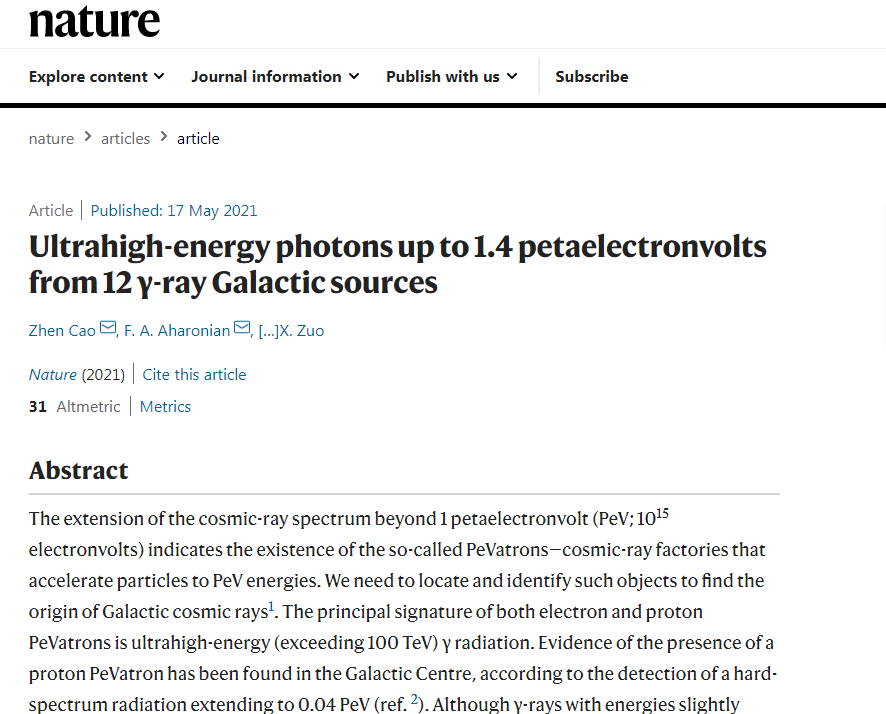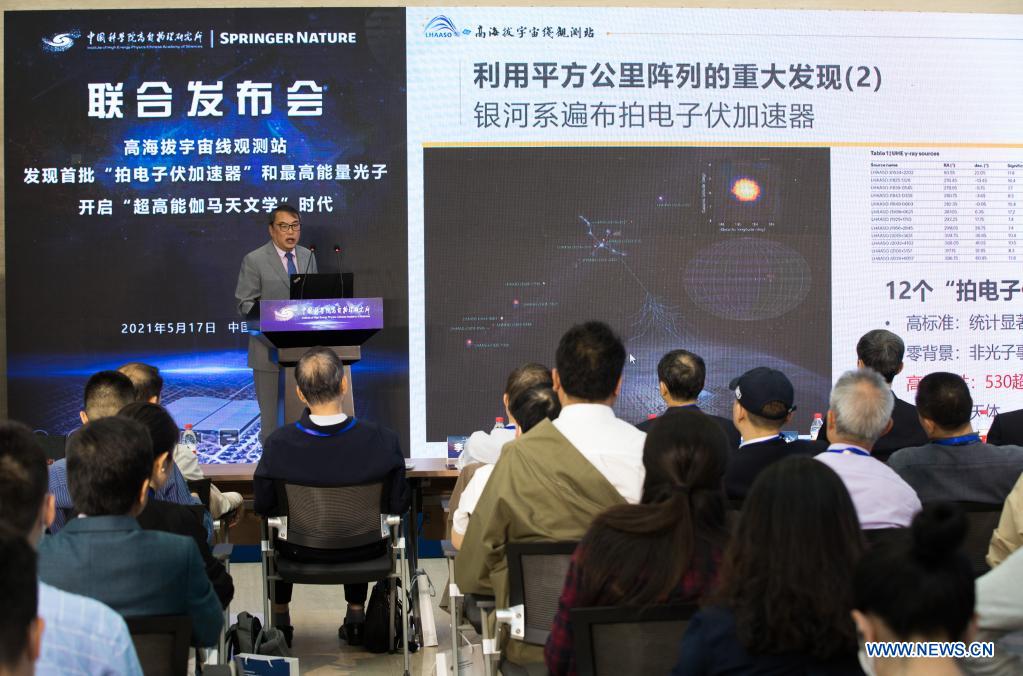
An aerial view of China's Large High Altitude Air Shower Observatory (LHAASO) in Daocheng, southwest China's Sichuan Province, February 2, 2021. /Xinhua
An aerial view of China's Large High Altitude Air Shower Observatory (LHAASO) in Daocheng, southwest China's Sichuan Province, February 2, 2021. /Xinhua
Chinese scientists have detected a dozen ultra-high-energy (UHE) cosmic accelerators within the Milky Way, a finding that could overturn humanity's understanding of the galaxy. It could help reveal the origin of cosmic rays, which have puzzled scientists for a century.
The finding was based on the observations of China's Large High Altitude Air Shower Observatory (LHAASO), one of the country's key national science and technology infrastructure facilities, which is under construction in Daocheng, southwest China's Sichuan Province.
The discovery was published in the journal Nature on Monday.

Screenshot of the study on the website of Nature.
Screenshot of the study on the website of Nature.
Scientists led by the Institute of High Energy Physics (IHEP) under the Chinese Academy of Sciences made the discovery after an 11-month observation period using the completed half of the installation.
Scientists have also detected photons with energies exceeding 1 Peta-electron volt (quadrillion electron-volts or PeV), 100 times more than the record high achieved by any man-made accelerator on Earth. One photon with an energy of 1.4 PeV was detected, the highest value ever observed by humans.
"These findings overturn our traditional understanding of the Milky Way and open up an era of UHE gamma astronomy. These observations will prompt us to rethink the mechanism by which high-energy particles are generated and propagated in the Milky Way," said Cao Zhen, chief scientist of LHAASO.

Cao Zhen, a researcher at the Institute of High Energy Physics (IHEP) under the Chinese Academy of Sciences (CAS), speaks at a press conference in Beijing, capital of China, on May 17, 2021. /Xinhua
Cao Zhen, a researcher at the Institute of High Energy Physics (IHEP) under the Chinese Academy of Sciences (CAS), speaks at a press conference in Beijing, capital of China, on May 17, 2021. /Xinhua
"In addition, these observations will encourage us to explore more deeply violent celestial phenomena and their physical processes, as well as to test basic physical laws under extreme conditions," Cao said.
Through UHE gamma astronomy, the century-old mystery of the origin of cosmic rays may soon be solved, Cao added.
"These findings bring us closer to understanding the origins of extremely high-energy cosmic rays," said Karl Ziemelis, chief physical sciences editor for Nature.
The project of LHAASO was launched in 2017 and the entire facility is expected to be fully completed by 2021. The observatory began scientific observations in April 2019.
"With the completion of LHAASO and continuous data accumulation, we can anticipate finding an unexplored 'UHE universe' full of surprising phenomena," He Huihai with the IHEP added.
Source(s): Xinhua News Agency

